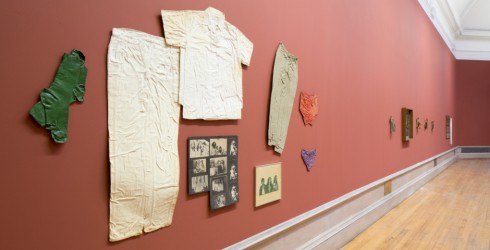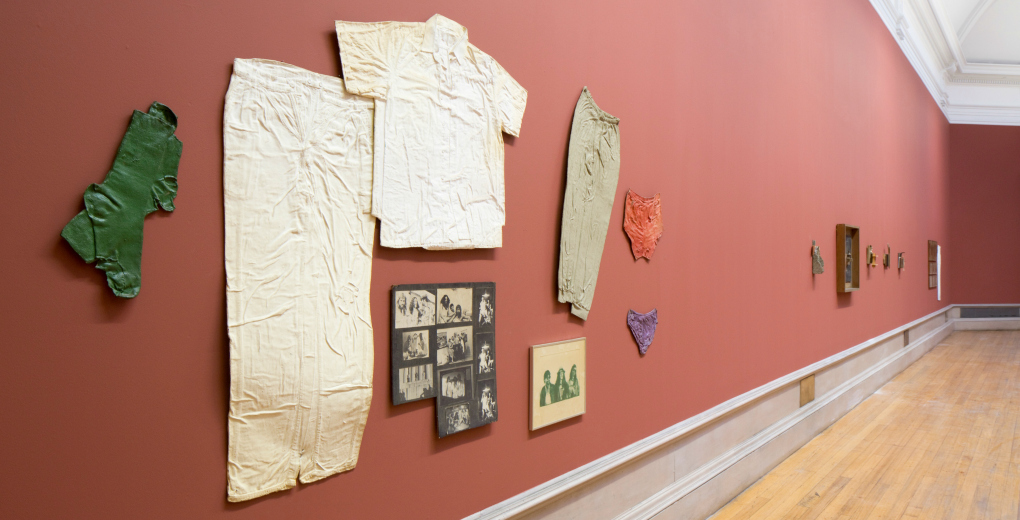
Visiting a contemporary art exhibition has always left me feeling slightly perplexed. As an art history student devoted to Symbolism and Post-Impressionism I don’t often feel inclined to explore the unchartered regions of contemporary art practice. Volunteering at the Glasgow International Festival of Visual Art, however, has forced me to experience art on a whole different level. Being stuck for hours in one dark room while looking at a video slowed down so much that it seems like it’s never going to end truly changes your perception of what the term ‘art’ might mean.
Usually, people come into the galleries, glance about, stop at a video or two and then leave (the only exception seems to be Anthea Hamilton and Nicholas Byrne’s exhibition at Govanhill Baths which became a sanctuary for couples in love and stoners who spend hours on end in the bouncing castle known as Love Box). Contemporary art festivals seem as fast-paced as our everyday lives, governed by a schedule almost bursting at the seams. I’ve seen people who actually raced through the floors of the galleries as if they were hoping to win a prize for the most art objects seen in one day. What I discovered is that, on the contrary, art reveals itself to you slowly. If you’re forced to look at the exhibition for more than twenty minutes you begin to notice recurrent themes and contradictions; your mind creates a map of the gallery space, with the meanings lurking in the corners.
This is what happened to me in Charlotte Prodger’s rooms at McLellan Galleries. At first glance the space looks uninviting, deliberately made hard to navigate through by the artist. One day, I was standing in the smaller room feeling quite tired and uninterested. Progder’s voice hovered and echoed around me, recounting the names of Youtube users who have uploaded films of their pet bullterriers in a sort of ‘trance,’ which apparently is quite common to their breed. The show had its effect on me as well – I was mesmerized and almost did not wish to move. The format of the works is set against the content: something in Progder’s voice tells you to relax, but your body is physically unable to because of the claustrophobic arrangement of cables, TVs and speakers.
It is worth spending more time while at the shows because, ultimately, you’re not going there to see objects, or even art in general, but a person, the artist. Getting to know a person takes considerably more time than appreciating a 5-mintue video. In some ways or others, all four artists exhibited at McLellan Galleries reveal a lot about themselves in their respective shows. I had a chance to meet both Prodger and Avery Singer, whose monochromatic paintings occupy the central room upstairs. Prodger’s pedantic nature reveals itself in the care with which she arranged the cables and objects in the rooms. Singer’s shyness is concealed behind the scale of her works and also the impersonal technique she uses: she designs her works in a 3D modelling program called SketchUp and then transfers them onto the huge canvas. Hudinilson Jr’s show in the other room upstairs feels personal for other reasons; due to his recent death, the exhibition of his personal objects and collages preserved in his diaries indeed renders the room into a sort of a funereal shrine (if you look very closely, you can even see an unidentifiable hair stuck to one of the objects on the podium next to Hudinilson’s glittery name).
Whilst the Brazilian artist was primarily concerned with the body and its representation in art, Jordan Wolfson’s exhibition on the lower level, on the other hand, feels like a journey through the artist’s mind. Darkness envelops most of the rooms and strangely familiar sounds can be heard: yes, it is indeed Beyoncé’s ‘Sweet Dreams,’ only slowed down and made to sound as if it was ripped out from her throat by some hellish creatures. Like Prodger, Wolfson also invades the visitors’ privacy. You are forced to remove your shoes before watching Wolfson’s adventures as a gay punk in New York in Raspberry Poser. Then you go on to listen to a lover’s exchange in a room called by the volunteers ‘the kitchen,’ tucked away behind all the other rooms like an unwanted memory. Lyricism of some videos is shattered by vulgarity of others. It feels like the artist is staring at you through the eyes of the different personas he assumes in his videos, constantly judging you.
Time stands still in McLellan Galleries, a building which was abandoned for years and now reclaimed by the artist community. Having spent countless hours in its murky rooms I feel both compelled to return and slightly terrified of seeing the artworks which I know so well by now, and which seem like ghosts haunting me with questions I can’t answer.
Words by Natalia Masewicz

